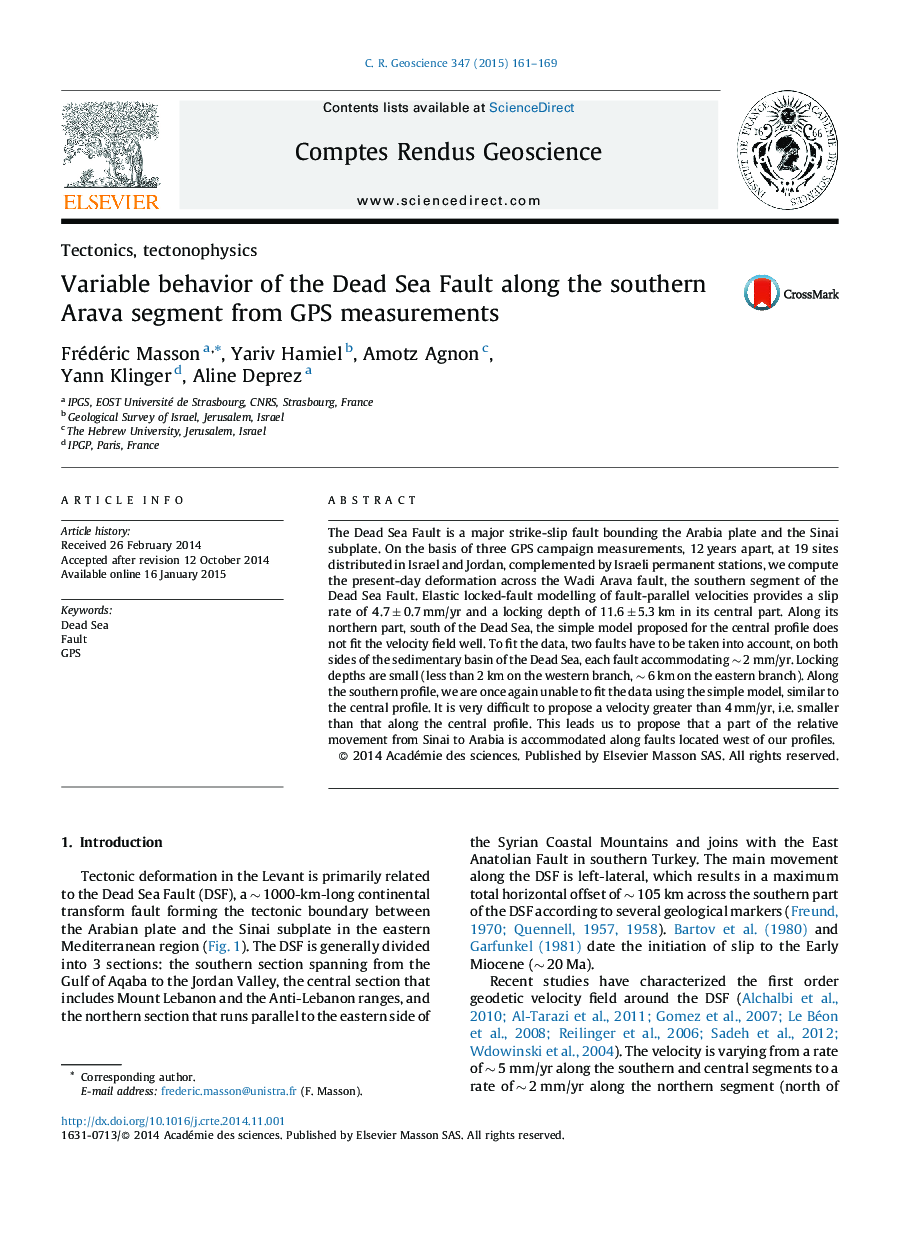| Article ID | Journal | Published Year | Pages | File Type |
|---|---|---|---|---|
| 4462184 | Comptes Rendus Geoscience | 2015 | 9 Pages |
The Dead Sea Fault is a major strike-slip fault bounding the Arabia plate and the Sinai subplate. On the basis of three GPS campaign measurements, 12 years apart, at 19 sites distributed in Israel and Jordan, complemented by Israeli permanent stations, we compute the present-day deformation across the Wadi Arava fault, the southern segment of the Dead Sea Fault. Elastic locked-fault modelling of fault-parallel velocities provides a slip rate of 4.7 ± 0.7 mm/yr and a locking depth of 11.6 ± 5.3 km in its central part. Along its northern part, south of the Dead Sea, the simple model proposed for the central profile does not fit the velocity field well. To fit the data, two faults have to be taken into account, on both sides of the sedimentary basin of the Dead Sea, each fault accommodating ∼ 2 mm/yr. Locking depths are small (less than 2 km on the western branch, ∼ 6 km on the eastern branch). Along the southern profile, we are once again unable to fit the data using the simple model, similar to the central profile. It is very difficult to propose a velocity greater than 4 mm/yr, i.e. smaller than that along the central profile. This leads us to propose that a part of the relative movement from Sinai to Arabia is accommodated along faults located west of our profiles.
